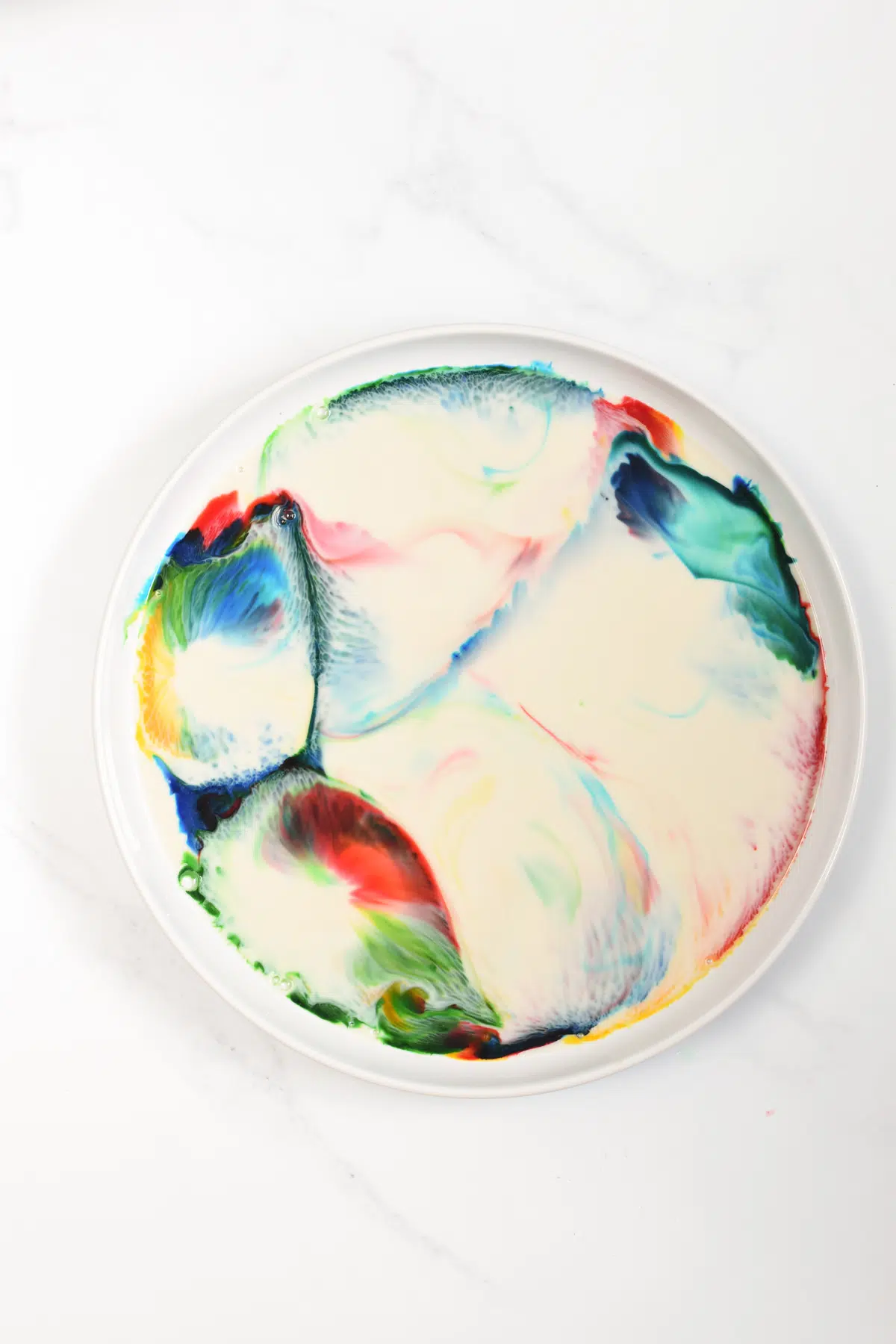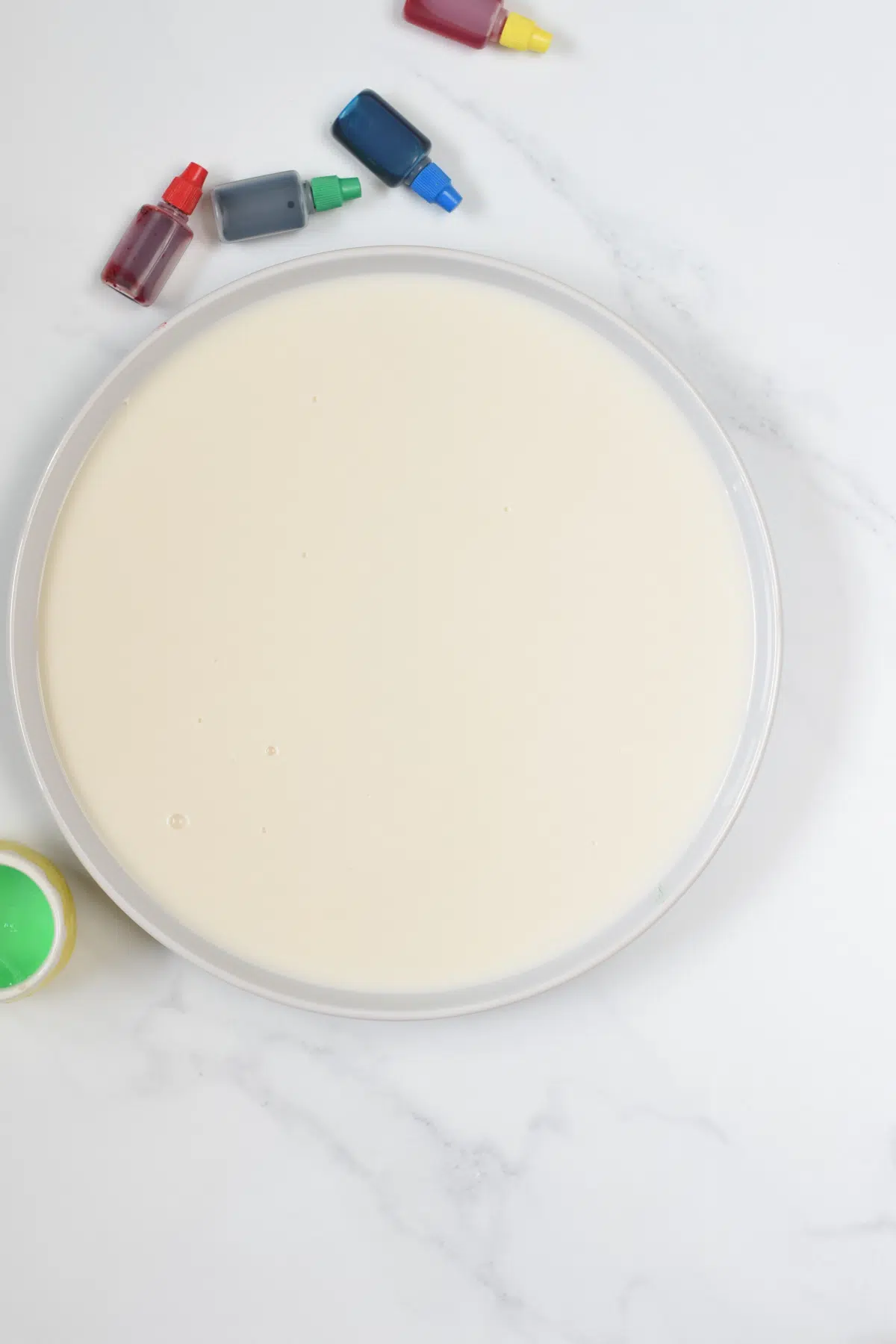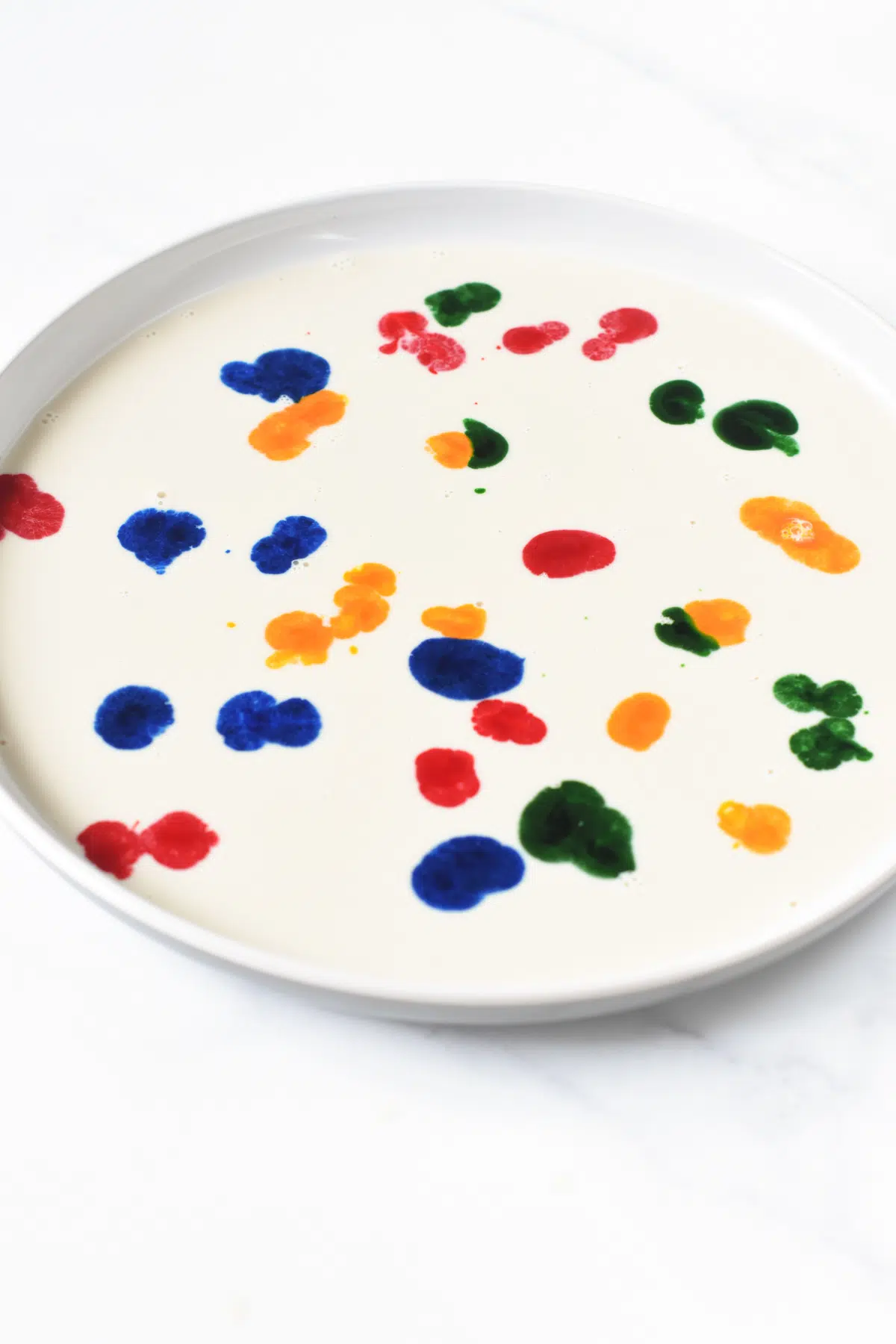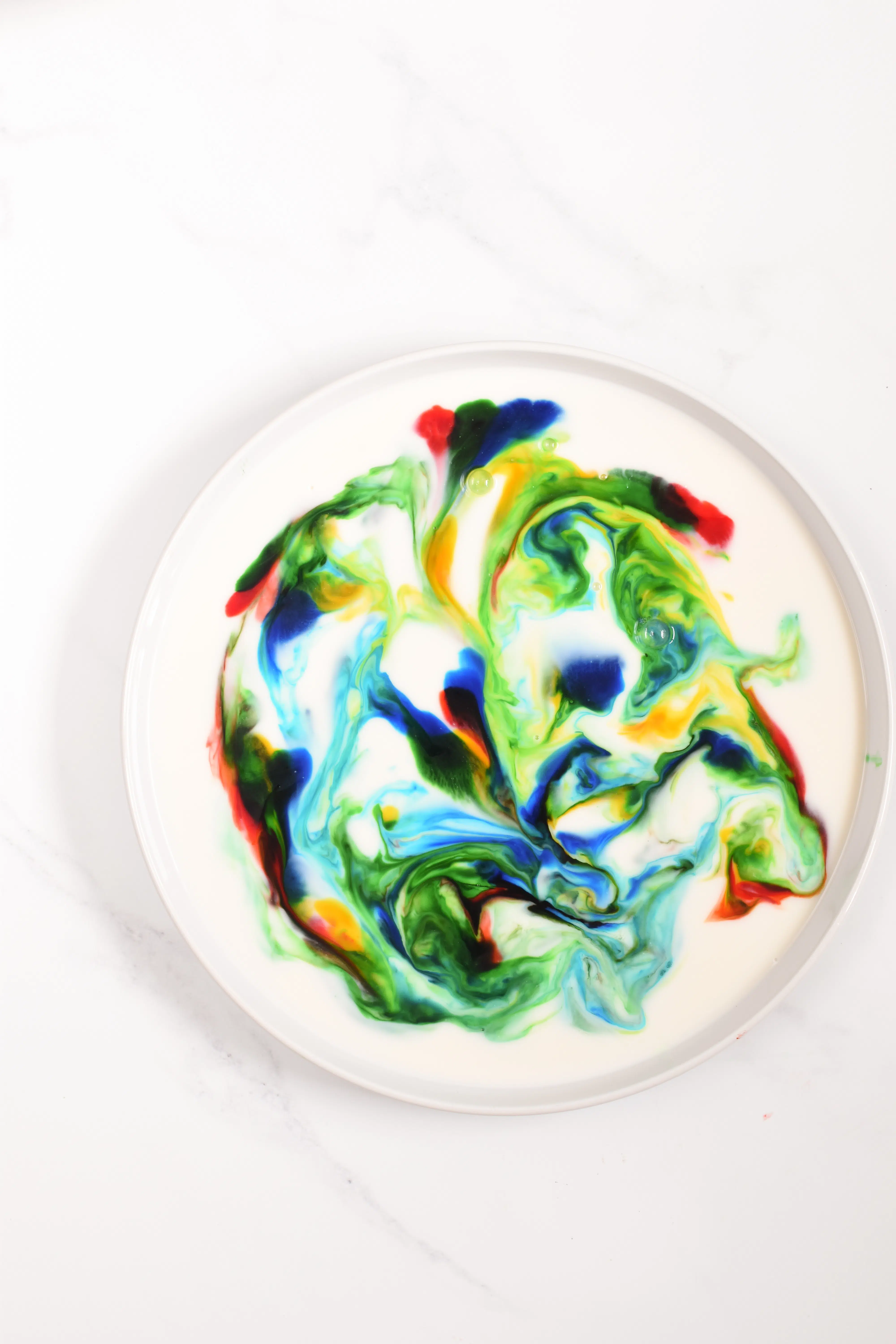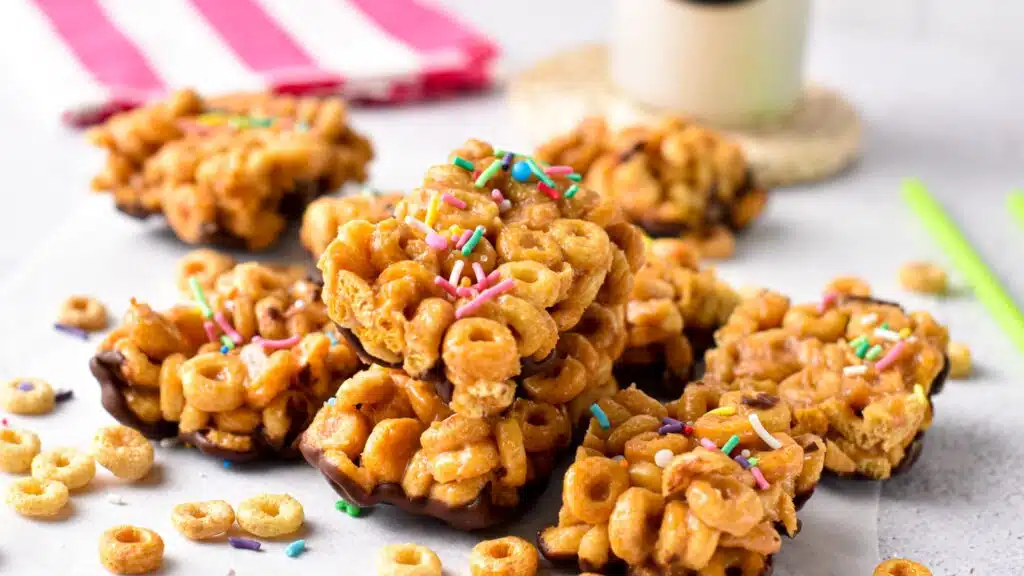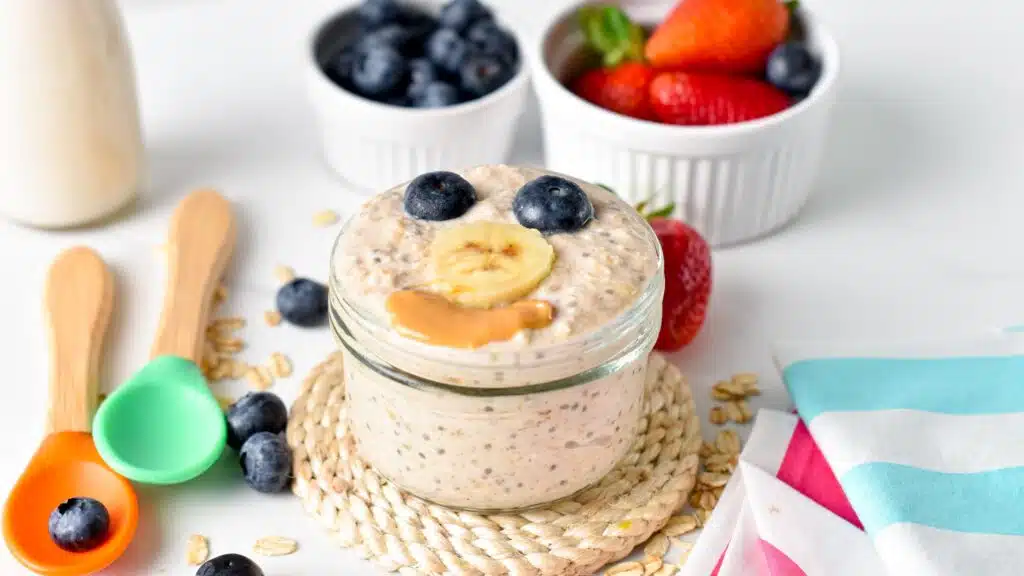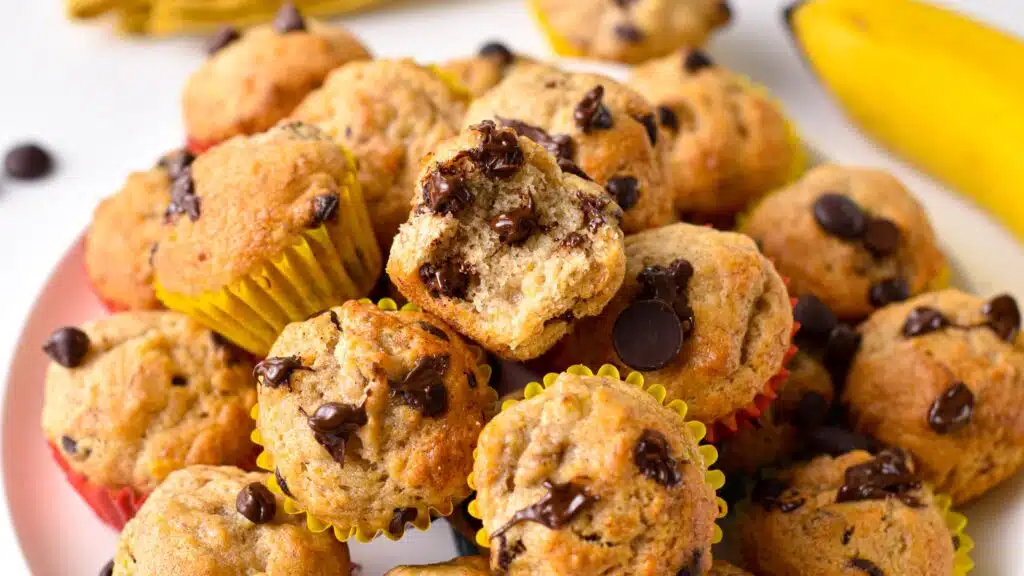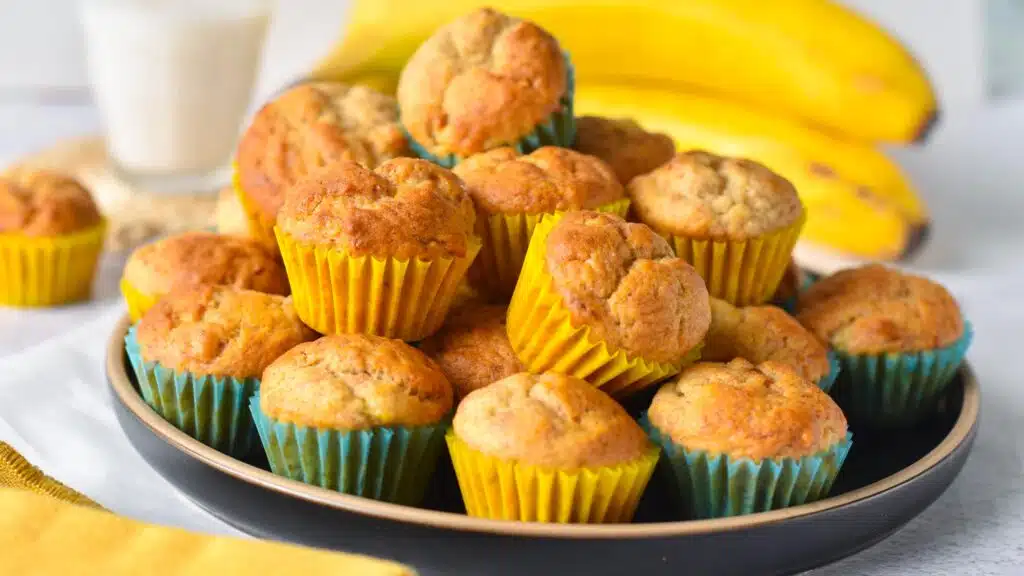This Color Changing Milk Experiment, also called the magic milk experiment is one of the easiest visual science activities for kids. Here we explain how to make this milk and food coloring experiment at home and also the science behind it!
What’s The Purpose Of The Color Changing Milk Experiment?
It’s a kid science experiment that uses milk, food coloring, and dish soap to create a marble color effect in the milk. It teaches kids how molecules bond in nature.
How To Do The Magic Milk Experiment
Before we explain the science behind this cool kid science experiment, here’s what you need to make it:
- Full-fat milk – if you wonder what milk is the best for this magic milk experiment, the answer is all about fat! You can use any full-fat milk of any kind, even soy milk, but the experiment wouldn’t work with skim milk, almond milk, or coconut milk. These milks are mostly made of water, poor in fat, and fat molecules react with the soap in this experiment.
- Dish soap or hand soap
- Liquid food coloring red, yellow, blue, and green are great.
Experiment
To do this experiment, you need first to pour some milk into a shallow dish until it fully covers the bottom of the dish.
Then, add one drop of each liquid food coloring in different spots.
Finally, to make the milk food coloring and dish soap experiment start, use a cotton swab and dip the cotton’s top into dish soap.
Now, touch the tip of the cotton swap on the surface of the milk to release soap in the milk.
Now, the magic milk experiment starts! A competition between the fat molecules of the milk starts. They all want to pair with the soap.
Magic Milk Experiment Explanation
Milk is a liquid high in fat and proteins.
Dish soap is a bipolar molecule, so it has two extremities:
- One end loves to bond with water molecules. It’s the hydrophilic extremity.
- One end loves to bond with fat molecules. It’s the hydrophobic end.
So when you release a drop of dish soap in your plate full of milk and food coloring, a competition starts as the water-fearing end of the dish soap molecule wants to bond with the fat from milk.
During this process, the molecules of fat move and twist themselves around the plate to find a match with the soap molecules. Molecules, just like humans, prefer to be in pairs, and they attract themselves to bond.
As soap is added, the fat molecules from milk move to bond with the hydrophobic ends of soap. They also bump into the food coloring molecules that get spread out and distributed into different shapes, creating a marble color effect in your milk.
When all the soap molecules are bonded with fat, the experiment stops. That’s why you don’t see any movement in the food coloring drops.
Reactivating the experiment
This is not always possible because it depends on how many fat molecules from the milk are still free in the plate.
Add more soap to the center of the milk and see what happens. If the explosion of color starts again, it means you still have some free fat molecules keen to bond with the soap hydrophobic end!
When the milk is saturated with soap, all bonds have been created, the experience stops.
Can I restart the experiment?
It depends. Try adding more dish soap to the plate. If there are still some free fat molecules left in the milk, the reaction restarts as they bond with the soap.
I hope you had fun doing this 5-minute science experiment with your kids! If you have any questions or comments, leave a note below!
Carine
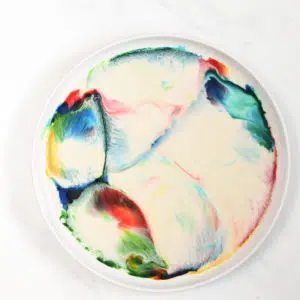
Color Changing Milk Experiment
Equipment
- 1 shallow dish
- Cotton Swab
Materials
- 1 cup Full-fat Milk
- 2-3 drops Dish Soap
- 10-20 drops Liquid Food Coloring
Instructions
- Cover the bottom of a shallow dish with milk.
- Add one drop of each food color to different spots on the plate - look at my pictures above to see how we spread the drops over the dish.
- Now dip the cotton swab into dish soap and bring the swab in the center of the milk to release soap in the dish.
- The explosion of color starts - read above for the scientific explanation about this magic milk experiment to teach your kids about basic chemistry.

